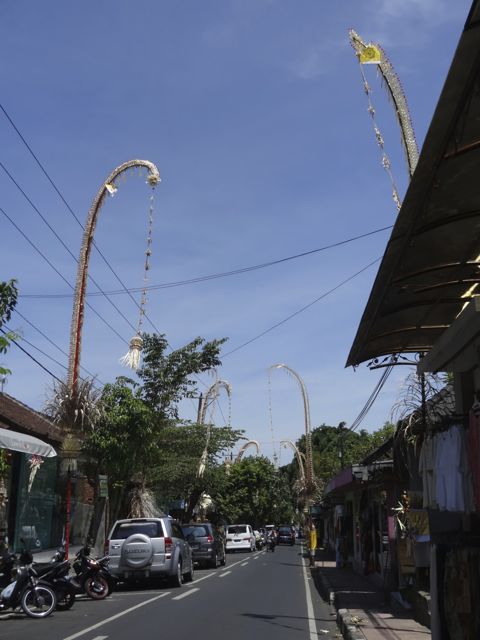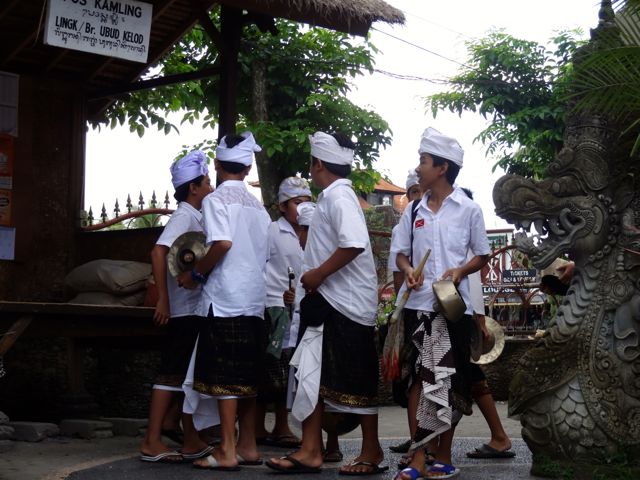I arrived in Bali during an auspictious time. The streets were decorated with bamboo poles and prayer offerings were everywhere. I saw processions of women carrying towers of food and flowers; groups of kids of all ages playing the gamelan; and processions taking Barong (mystical beast) through the streets. In fact, every home and business had its “penjor” (similar to a Christmas tree), but outdoors and decorated with fruit, coconut leaves and flowers.
 I had arrived during the week of Galungan and Kuningan. Galungan is the most important feast for Balinese Hindus, a celebration to honor the creator of the universe and the spirits of the honored ancestors. The festival symbolizes the victory of good (Dharma) over evil (Adharma), and encourages the Balinese to show their gratitude to the creator and sainted ancestors. During this holy period, Balinese cover up pots of clay, cook special cakes (known as jaja), sacrifice animals, visit family members and pray at many temples. The Dance of the Barong is a spectacle through the streets of Bali. Similar to a dragon dance, two people wear the costume as they make their way through the village with pomp and sound. The Barong is meant to restore the balance of good and evil in a Balinese home.
I had arrived during the week of Galungan and Kuningan. Galungan is the most important feast for Balinese Hindus, a celebration to honor the creator of the universe and the spirits of the honored ancestors. The festival symbolizes the victory of good (Dharma) over evil (Adharma), and encourages the Balinese to show their gratitude to the creator and sainted ancestors. During this holy period, Balinese cover up pots of clay, cook special cakes (known as jaja), sacrifice animals, visit family members and pray at many temples. The Dance of the Barong is a spectacle through the streets of Bali. Similar to a dragon dance, two people wear the costume as they make their way through the village with pomp and sound. The Barong is meant to restore the balance of good and evil in a Balinese home.
The tenth day, Kuningan, marks the end of Galungan, and is believed to be the day when the spirits ascend back to heaven. On this day, Balinese families get together, make offerings and pray at temples. Then they have a feast where traditional Balinese dishes such as lawar (spicy pork and coconut sauce dish) and satay are served.

